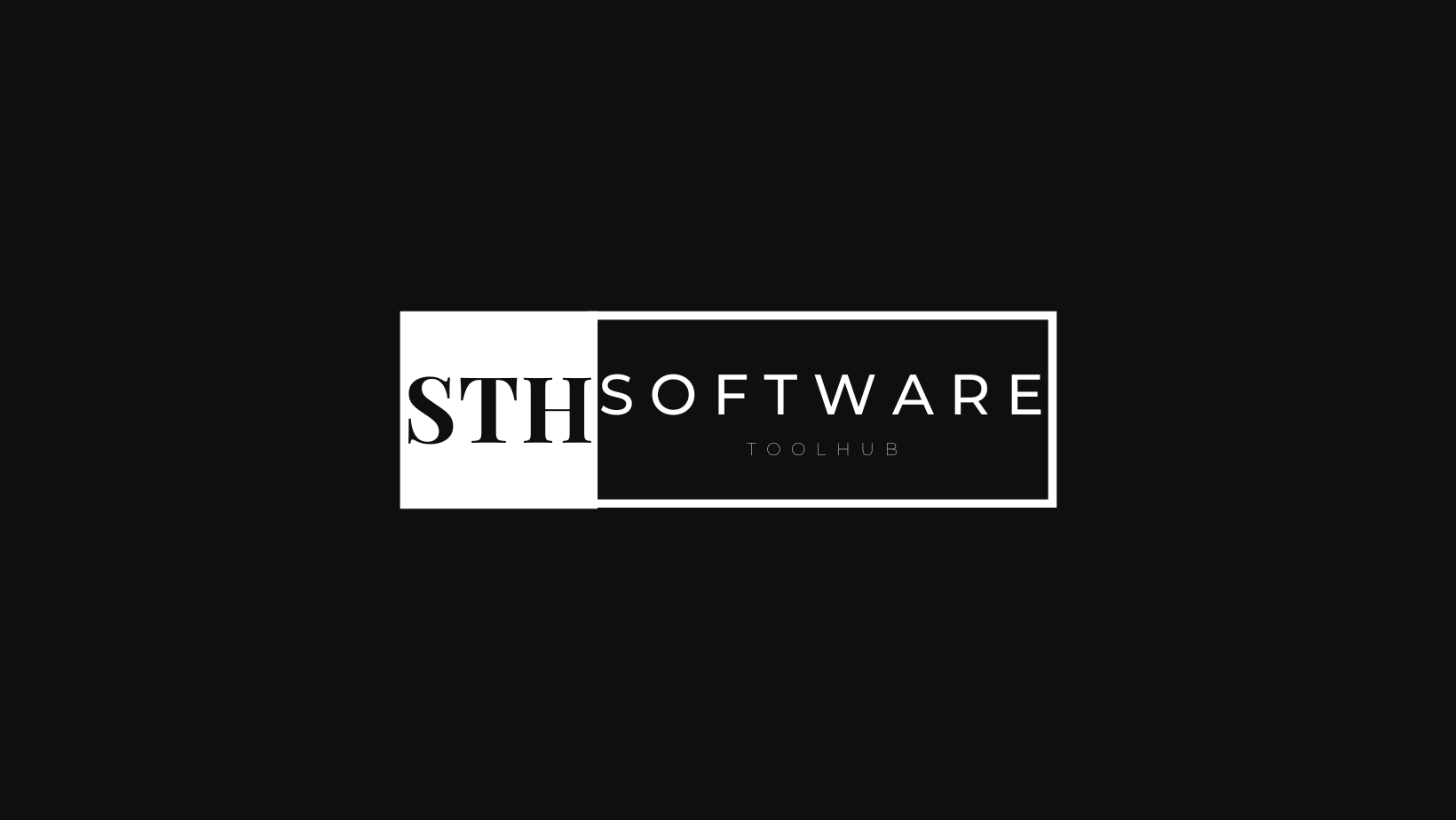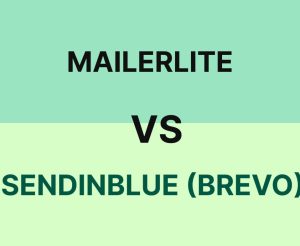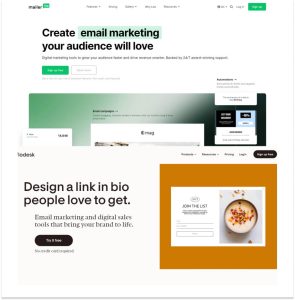Constant Contact vs ConvertKit lets compare. Email marketing is one of the most powerful and profitable ways to grow your online business. It allows you to communicate with your audience, build trust and loyalty, and drive sales and conversions. However, to succeed with email marketing, you need a reliable and effective software that can help you create, send, and analyze your email campaigns.
There are many email marketing software available in the market, but two of the most popular and reputable ones are Constant Contact and ConvertKit. Both of these software offer a range of features, such as email templates, list management, and reporting. But which one is the best fit for your needs and goals?
In this post, I will compare Constant Contact vs ConvertKit in terms of their pricing, features, pros and cons, and customer reviews. I will also give you some tips and recommendations on how to make the best decision for your email marketing needs. By the end of this post, you will have a clear idea of which email marketing software is right for you: Constant Contact or ConvertKit.
Table of Contents
What is Constant Contact?
Constant Contact is a robust email marketing software that’s designed for small businesses and non-profits. The software offers a range of features, including email templates, list management, event management, and reporting. One of the key features of Constant Contact is its email templates. You can choose from hundreds of professionally designed templates that are optimized for mobile devices and various industries. You can also customize the templates to match your brand and style, by changing the colors, fonts, images, and layouts. Another key feature of Constant Contact is its list management.
You can easily import, export, and segment your email contacts, and use tags to organize them into groups. You can also use Constant Contact to manage your events, such as webinars, workshops, and fundraisers. You can create and send invitations, registration forms, reminders, and follow-ups, and track your attendance and revenue. To measure how your email campaigns are performing, Constant Contact offers a range of reporting features with metrics like open rates, click-through rates, and conversion rates, as well as track revenue generated from your campaigns.
What is ConvertKit?
ConvertKit is a simple and elegant email marketing software that’s designed for bloggers and creators. The software offers a range of features, including email templates, list management, automation, and reporting. One of the key features of ConvertKit is its email templates. You can choose from a few minimalist and modern templates that are focused on text and content. You can also customize the templates to match your brand and style, by changing the colors, fonts, images, and layouts.
Another key feature of ConvertKit is its list management. You can easily import, export, and segment your email contacts, and use tags and custom fields to organize them into groups. You can also use ConvertKit to automate your email campaigns, such as welcome sequences, sales funnels, and newsletters. You can create and send emails based on triggers and actions, such as sign-ups, purchases, clicks, and more. To measure how your email campaigns are performing, ConvertKit offers a range of reporting features with metrics like open rates, click-through rates, and conversion rates, as well as track revenue generated from your campaigns.
Constant Contact vs ConvertKit: Pricing Comparison
One of the main factors that you need to consider when choosing an email marketing software is the pricing. How much does it cost to use Constant Contact or ConvertKit? What are the features and benefits that you get for your money? Here is a comparison of the pricing plans and features of Constant Contact and ConvertKit:
| Constant Contact | ConvertKit |
|---|---|
| Free for up to 100 contacts and 500 email sends per month | Free for up to 1,000 subscribers and unlimited email sends |
| $15 per month for up to 500 contacts and unlimited email sends | $29 per month for up to 1,000 subscribers and unlimited email sends |
| $29 per month for up to 1,000 contacts and unlimited email sends | $49 per month for up to 3,000 subscribers and unlimited email sends |
| $49 per month for up to 2,500 contacts and unlimited email sends | $79 per month for up to 5,000 subscribers and unlimited email sends |
| $99 per month for up to 5,000 contacts and unlimited email sends | Custom pricing for more than 5,000 subscribers |
| $129 per month for up to 10,000 contacts and unlimited email sends | |
| Custom pricing for more than 10,000 contacts |
As you can see, Constant Contact and ConvertKit have different pricing plans and features. Constant Contact has a higher starting price than ConvertKit, but it also offers more features for creating and managing email campaigns. ConvertKit has a lower starting price than Constant Contact, but it also offers fewer features for creating and managing email campaigns.
Constant Contact has a free plan for up to 100 contacts and 500 email sends per month, but it has very limited features and functionality. Constant Contact’s paid plans start from $15 per month for up to 500 contacts and unlimited email sends, and go up to $129 per month for up to 10,000 contacts and unlimited email sends. For more than 10,000 contacts, you need to contact Constant Contact for a custom quote. Constant Contact’s paid plans include features such as email templates, list management, event management, reporting, social media marketing, surveys and polls, coupons and donations, and more.
ConvertKit has a free plan for up to 1,000 subscribers and unlimited email sends, but it has very limited features and functionality. ConvertKit’s paid plans start from $29 per month for up to 1,000 subscribers and unlimited email sends, and go up to $79 per month for up to 5,000 subscribers and unlimited email sends. For more than 5,000 subscribers, you need to contact ConvertKit for a custom quote. ConvertKit’s paid plans include features such as email templates, list management, automation, reporting, and more.
OK, I will continue with the blog post. Here is the next part:
Constant Contact vs ConvertKit: Pros and Cons
To help you decide which email marketing software is right for you, here is a summary of the pros and cons of Constant Contact and ConvertKit:
| Constant Contact | ConvertKit |
|---|---|
| Pros | Pros |
| – Robust email marketing features | – Simple and elegant email marketing features |
| – User-friendly interface | – User-friendly interface |
| – Event management | – Automation |
| – Social media marketing | – Landing pages and forms |
| Cons | Cons |
| – Complex and variable pricing | – Limited templates and design options |
| – Limited advanced automation features | – Limited integrations and support |
| – Limited integrations and support | – New and unproven platform |
| – Outdated and generic templates |
As you can see, Constant Contact and ConvertKit have different pros and cons, depending on your needs and preferences. Constant Contact is more suitable for small businesses and non-profits who want to use email marketing for various purposes, such as newsletters, events, and social media. ConvertKit is more suitable for bloggers and creators who want to use email marketing for simple and straightforward purposes, such as welcome sequences, sales funnels, and newsletters.
Constant Contact vs ConvertKit: Customer Reviews
Another way to compare Constant Contact and ConvertKit is to look at what their customers have to say about them. Here are some of the customer reviews from sources such as Trustpilot, Capterra, and G2:
| Constant Contact | ConvertKit |
|---|---|
| “Constant Contact is a great email marketing software for small businesses and non-profits. It is very easy and intuitive to use, and the templates and designs are professional and appealing. I love that I can use Constant Contact to manage my events, surveys, and social media, as well as my email campaigns. Constant Contact has helped me increase my engagement, conversions, and revenue, and I can’t recommend it enough.” | “ConvertKit is a great email marketing software for bloggers and creators. It is very easy and intuitive to use, and the templates and designs are minimalist and modern. I love that I can use ConvertKit to automate my email campaigns, and create landing pages and forms, as well as my email campaigns. ConvertKit has helped me increase my subscribers, conversions, and revenue, and I can’t recommend it enough.” |
| “Constant Contact is a good email marketing software for beginners and non-techies, but it is also very limited and outdated. It has a lot of features and functionality, but it also has a lot of bugs and glitches. For example, sometimes the emails don’t look good on mobile devices, and sometimes the emails don’t get delivered. I think Constant Contact is more suitable for simple and basic email marketing, not for advanced and complex email marketing.” | “ConvertKit is a good email marketing software for advanced and tech-savvy users, but it is also very new and unproven. It has a lot of features and functionality, but it also has a lot of limitations and restrictions. For example, you can only send plain text emails, and you have to use a ConvertKit domain. I think ConvertKit is more suitable for creative and experimental email marketing, not for reliable and consistent email marketing.” |
| “Constant Contact is an old and reliable email marketing software that has a lot of credibility and reputation. It has a lot of features and functionality, but it also has a lot of competition and alternatives. For example, there are many other email marketing software that offer more features and functionality, such as automation, segmentation, and personalization. I think Constant Contact is still a good option for email marketing, but it needs to improve and innovate to keep up with the market.” | “ConvertKit is a new and innovative email marketing software that has a lot of potential and promise. It has a lot of features and functionality, but it also has a lot of room for improvement and development. For example, there are many features and functionality that are missing or underdeveloped, such as analytics, reporting, and integrations. I think ConvertKit is a promising option for email marketing, but it needs to grow and mature to compete with the market.” |
Constant Contact vs ConvertKit: How to Choose the Best Email Marketing Software for You
Now that you have seen the comparison of Constant Contact and ConvertKit in terms of their pricing, features, pros and cons, and customer reviews, you may be wondering how to choose the best email marketing software for you. There is no definitive answer to this question, as it depends on your business goals, budget, and preferences. However, here are some tips and recommendations that can help you make the best decision for your email marketing needs:
- Define your email marketing goals: Before you choose an email marketing software, you need to have a clear idea of what you want to achieve with your email marketing. Do you want to increase your brand awareness, grow your email list, generate more leads, drive more sales, or improve your customer loyalty? Having a specific and measurable goal will help you evaluate the performance and value of your email marketing software.
- Know your email marketing budget: Another factor that you need to consider is your email marketing budget. How much are you willing and able to spend on your email marketing software? Do you prefer a flat rate or a variable rate? Do you want to pay monthly or annually? Do you want to get a discount or a free trial? Knowing your email marketing budget will help you narrow down your options and choose the most affordable and suitable software for your business.
- Identify your email marketing features: The next factor that you need to consider is your email marketing features. What are the features and functionality that you need and want for your email marketing? Do you need templates, editor, list management, event management, reporting, social media marketing, surveys and polls, coupons and donations, or other features? How important and essential are these features for your email marketing strategy? Identifying your email marketing features will help you compare and contrast the different software and choose the most powerful and flexible one for your business.
- Test and try the email marketing software: The last factor that you need to consider is your email marketing experience. How easy and fun is it to use the email marketing software? How reliable and secure are they? How responsive and helpful is their support? How satisfied and happy are their customers? The best way to answer these questions is to test and try the email marketing software yourself. You can sign up for a free trial, create and send some emails, and see how they work and feel. You can also read some reviews, testimonials, and case studies, and see how other businesses use and benefit from the email marketing software.
Based on these tips and recommendations, you can choose the best email marketing software for you: Constant Contact or ConvertKit. Here is a summary of the main differences and similarities between them:
| Constant Contact | ConvertKit |
|---|---|
| – Robust email marketing software | – Simple and elegant email marketing software |
| – User-friendly interface | – User-friendly interface |
| – Event management | – Automation |
| – Social media marketing | – Landing pages and forms |
| – Complex and variable pricing | – Limited templates and design options |
| – Limited advanced automation features | – Limited integrations and support |
| – Limited integrations and support | – New and unproven platform |
| – Outdated and generic templates |
I hope you enjoyed this blog post about Constant Contact vs ConvertKit, and that it helped you choose the best email marketing software for you. Email marketing is a vital and valuable tool for online businesses, and choosing the right software can make a huge difference in your results and success.




